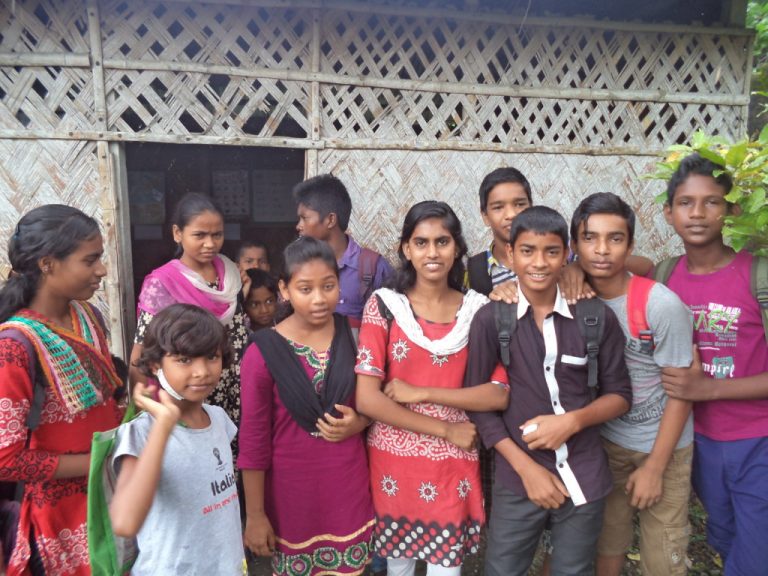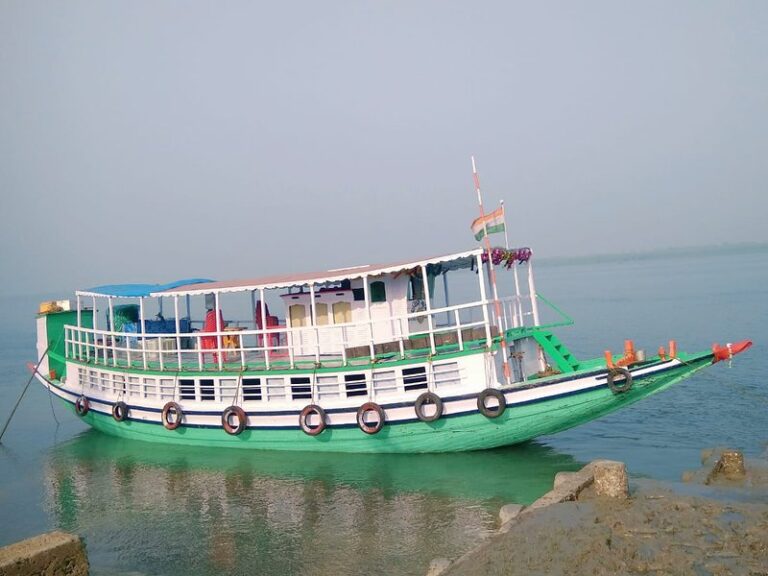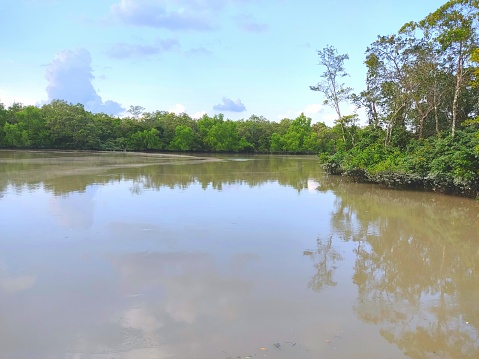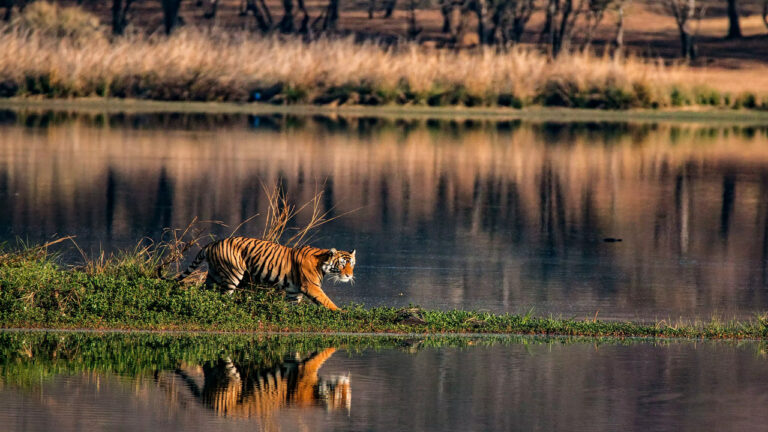The Sundarbans is a vast mangrove forest, which is home to a diverse range of flora and fauna. It is spread across parts of India and Bangladesh and is the largest delta in the world. The Sundarbans is also known for being the natural habitat of the saltwater crocodile, which is the largest living reptile on the planet. The saltwater crocodile can grow up to 20 feet in length and weigh over 1,000 kg.
Types of Crocodiles in Sundarbans
There are two species of crocodiles found in the Sundarbans:
- Saltwater crocodile (Crocodylus porosus): The saltwater crocodile is the larger of the two species found in the Sundarbans. The Sundarbans is also home to rare leucistic saltwater crocodiles or albino crocodiles, which are occasionally spotted. It is also the largest living reptile in the world, with males capable of growing up to 20 feet in length and weighing over 1,000 kg. Saltwater crocodiles are highly adaptable and are found in a variety of habitats, including freshwater, saltwater, and brackish water. They are also known for their aggressive behavior and are considered to be one of the top aquatic predators in the Sundarbans.
- Mugger crocodile (Crocodylus palustris): The mugger crocodile is a smaller species of crocodile found in the Sundarbans. They are typically around 10-13 feet in length and weigh around 150-200 kg. Mugger crocodiles are found in freshwater habitats, such as rivers, lakes, and ponds. They are also known for their aggressive behavior and are capable of taking down prey larger than themselves.
Both saltwater and mugger crocodiles are protected under Indian law and are listed as vulnerable species by the International Union for Conservation of Nature (IUCN). The Sundarbans provides an important habitat for both species, and efforts are being made to conserve their populations and protect their habitat.
Crocodiles in Sundarbans
The saltwater crocodile is an aquatic predator and is adapted to see underwater. It has excellent night vision, which allows it to hunt at night. The Sundarbans is home to a healthy population of saltwater crocodiles, which thrive in this unique ecosystem. They are the top aquatic predator in the Sundarbans, beating serious contenders such as the river shark, king cobra, python and semi-aquatic Bengal tiger.
The saltwater crocodile is a skilled predator and can feed on anything it can get its jaws on, including fish, birds, buffaloes, wild boar, rhesus macaques, deer, crabs, and even snakes. In water, it can overpower a swimming tiger. These crocodiles are ambush predators and mostly lie low. They often lurk on the river’s edges, with only their nose and eyes located atop the skull above the surface. When an unsuspecting prey stops by, the crocodile explodes out of the water, grabs and snaps its neck, drags and drowns it, before eating it.
In the Sundarbans, the saltwater crocodile is an integral part of the ecosystem. It helps to maintain a balance by preying on weaker animals, which helps to prevent overpopulation. The Sundarbans is also home to rare leucistic saltwater crocodiles or albino crocodiles, which are occasionally spotted. The white hue is a result of a partial loss of pigmentation.
How to find crocodiles in sundarbans
Crocodiles are one of the most popular wildlife species found in the Sundarbans. Here are some ways you can increase your chances of finding crocodiles in the Sundarbans:
- Take a guided boat safari: One of the best ways to find crocodiles in the Sundarbans is to take a guided boat safari. The boatmen are experienced and can take you to the places where crocodiles are commonly seen. They will also be able to identify the species of crocodiles. If you are looking to find a few crocodiles, the sundarban day trip is perfect for you. Checkout our other sundarban tour packages for a better understanding of all other packages
- Look for basking crocodiles: Crocodiles are cold-blooded animals and need to bask in the sun to regulate their body temperature. You can often find them lying on the banks of the rivers or on mudflats. Look for large bumps or shapes sticking out of the water or lying on the banks of the river.
- Visit during the dry season: Crocodiles are more active during the dry season (October to March) when the water level is low. During this time, they often come out of the water to bask in the sun or to hunt for food.
Note to Be cautious: Crocodiles are dangerous animals and can attack humans if they feel threatened. Always keep a safe distance and do not try to get too close to them. Follow the instructions of your guide or boatman and do not venture out on your own.
Conclusion
In conclusion, the Sundarbans is home to a healthy population of saltwater crocodiles, which thrive in this unique ecosystem. They are the top aquatic predator in the Sundarbans, and their presence helps to maintain a balance in the ecosystem. Visitors to the Sundarbans can witness these magnificent creatures in their natural habitat but must do so under the guidance of a trained guide, as they can be dangerous if provoked.




![Is Alcohol Allowed in Sundarban? The Answer Is No [Here’s Why]](https://www.maalaxmitravels.com/wp-content/uploads/2022/11/alcohol-in-sundarbans.jpg)

